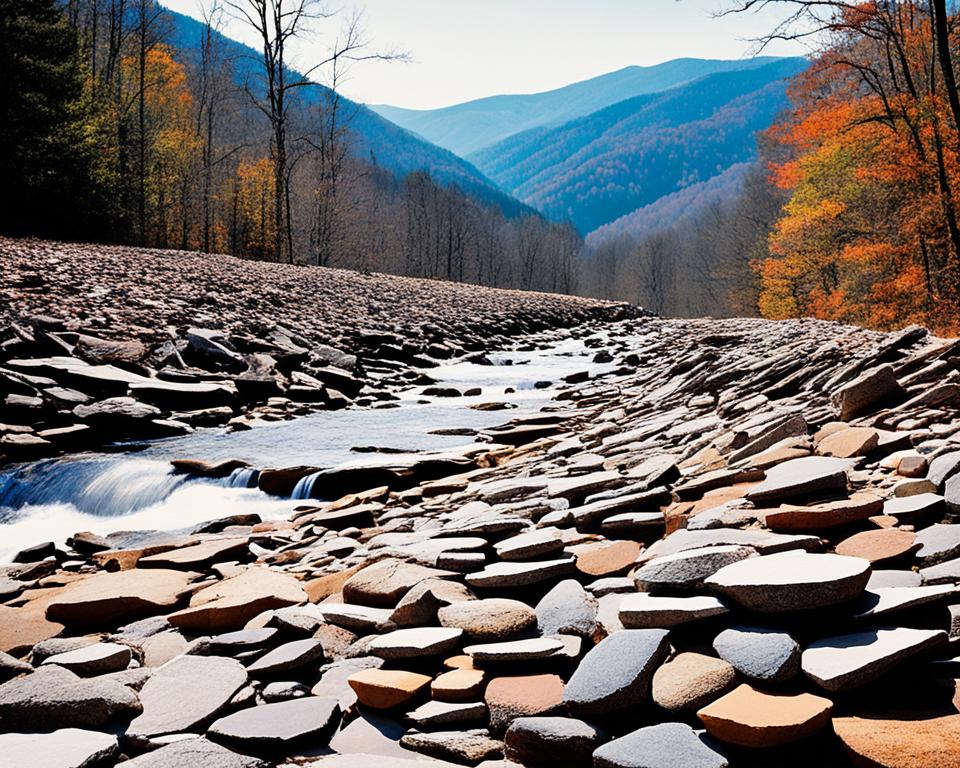
The Geology of Cades Cove: Unraveling the Smokies’ Geological History
Welcome to Cades Cove
Nestled in the heart of the Smoky Mountains, Cades Cove is a haven for nature lovers and history enthusiasts alike. This captivating destination is also a treasure trove for geology buffs, offering a glimpse into ancient rock formations, seismic activity, and diverse geological features shaped over millions of years.
The Formation of Cades Cove
Geological Processes
Cades Cove was formed through the uplifting and folding of rock layers, originally part of an ancient ocean floor. The movement of tectonic plates caused the oceanic crust to collide with the continental crust, creating the Smoky Mountains and the picturesque valley of Cades Cove. Over time, erosion and weathering shaped its landscape, creating the stunning valleys and rolling hills we see today.
Ancient Rock Formations
Limestone and Sedimentary Rocks
Millions of years ago, marine organisms deposited calcite, forming limestone. This ancient rock is a key to understanding Cades Cove’s past marine environment. Geologic windows in the area provide valuable insights into the rock layers and geological processes at play. These formations are a testament to the immense power and complexity of Earth’s processes.
Seismic Activity
Earthquakes and Faults
Cades Cove’s proximity to tectonic plate boundaries makes it susceptible to earthquakes and geological faults. Thrust faults in the area are evidence of past tectonic activity, significantly shaping the landscape. Understanding this seismic history is crucial for appreciating the dynamic nature of the region.
Environmental Geology
Impact on Ecosystem
The unique combination of rock formations and soil types in Cades Cove has profoundly shaped its ecosystem. Limestone influences the pH and mineral content of the soil, affecting vegetation and wildlife. Sinkholes, a common occurrence in limestone-rich areas, create unique wetland habitats, contributing to the area’s biodiversity.
Cultural Significance
Early Settlers and Natural Resources
The availability of natural resources like limestone influenced early settlers’ decisions on where to establish farms and build homes. The geology of Cades Cove provided fertile soil for agriculture, supporting crops like corn and wheat and livestock such as cattle and pigs. The cultural heritage of Cades Cove is deeply intertwined with its geological attributes, reflected in the preserved historic structures and agricultural landscape.
Future of Cades Cove Geology
Ongoing Research and Conservation
The study of Cades Cove’s geology is an ongoing process, with scientists dedicated to uncovering more about the region’s geological history. Conservation efforts aim to preserve its natural beauty and geological features for future generations. Future research may focus on the effects of climate change on the geologic landscape and the potential for future seismic activity.
Plan Your Visit
Cades Cove offers a wealth of attractions for visitors. Explore the best hiking trails, learn about the history of the Smoky Mountains, or enjoy a scenic drive through the valley. Discover the hidden geological marvels that make Cades Cove an extraordinary destination of geological significance.
For more information and to plan your adventure, visit the Cades Cove Guide.